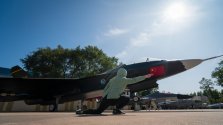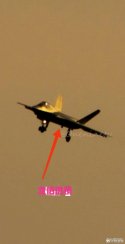Despite J-35 being more optimized for high speed performance than the F-35, the J-15B is probably a magnitude faster. For quick and dirty interception you need something like a flanker of F-15 for this reason.
That somewhat depends on whether J-35/XY can supercruise.
And in a loaded air to air interception role, I am not convinced if a loaded J-15 would actually have superior speed to a J-35/XY.
That said, the larger total/external payload of the J-15 airframe is probably beneficial for the "fleet interceptor role".
But the major rationales for procuring J-15B alongside J-XY/35, as others have touched on, is primarily due to:
- greater total (external) payload capacity and thus greater payload flexibility (including carrying outsize payloads)
- it is likely to have lower initial maintenance demands than the stealthy J-XY/35 (even accounting for modern RCS reduction measures)
- also it is a lower risk alternative and is likely to be able to reach operational status faster than J-XY/35 even if both ends up being "introduced" at the same time


